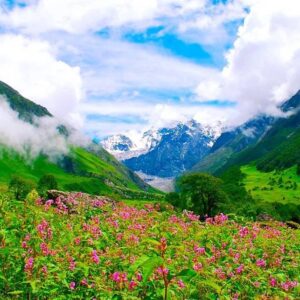Natural and Inaccessible Route from Jammu to the Holy Amarnath Cave

Amarnath cave is one of the most revered pilgrimage sites of Hindus. Situated at an altitude of 3,888 meters in Jammu and Kashmir, Amarnath Cave is considered to be one of the most sacred temples of Lord Shiva. Every year lakhs of devotees go on the Amarnath Yatra, which is organized by the Shri Amarnathji Shrine Board.
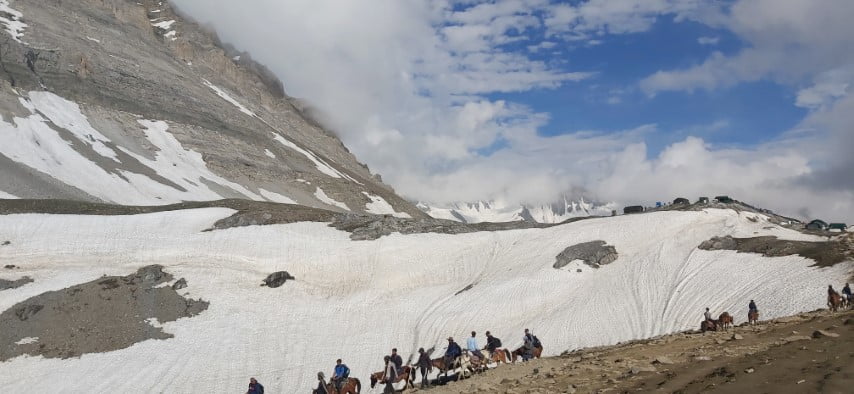
Here inside the cave, there is a natural Shivling made of ice, to see which devotees come from all over the country and abroad. Though there are various routes to reach this iconic destination, the scenic and rugged route from Jammu offers a unique and adventurous experience. In this blog post, we will embark on a virtual journey through this less arduous path, exploring its challenges, beauty, and the unwavering faith that inspires pilgrims along the way.
Jammu: Starting Point

On reaching Jammu railway station, it is necessary to take the passenger card first. The Amarnath Yatra often starts from Bhagvati Bhawan in Jammu city, where pilgrims from all corners of India and abroad congregate to embark on this spiritual journey.
Read More: The Top 10 Thrilling Treks in Uttarakhand Under 10000 Rupees
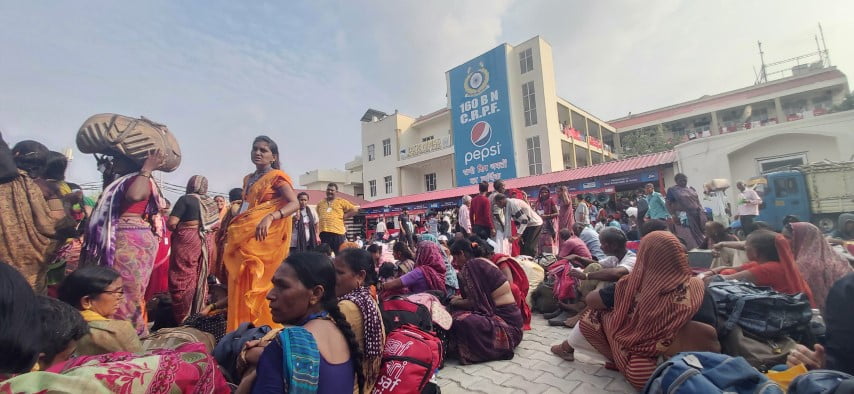
The city is abuzz with energy and devotion as devotees prepare to make the arduous journey to the Holy Amarnath Cave. It is a journey that demands both physical stamina and mental resilience, making it an unforgettable adventure for those who seek a deeper connection with nature and the divine.
Pahalgam: The Gateway to the Mountains
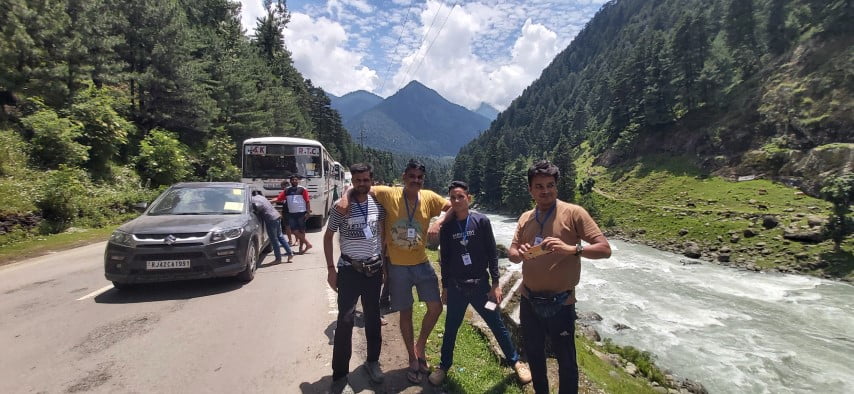
From Jammu, the journey continues to Pahalgam, a picturesque town nestled in the lap of the Himalayas. Pahalgam serves as the base camp for the pilgrimage, providing pilgrims with a moment of respite before the challenging climb.
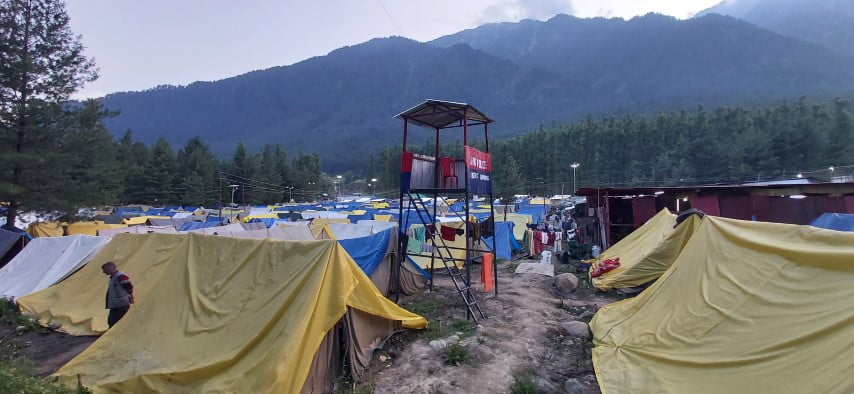
The natural beauty of Pahalgam is a prelude to the breathtaking landscapes that lie ahead. Pahalgam has Nunwan Base Camp where the travelers rest before the journey and prepare for the next day’s journey.
Read More: Top Religious Places Situated On the Hill in Uttarakhand
Chandanwari: Where the journey begins
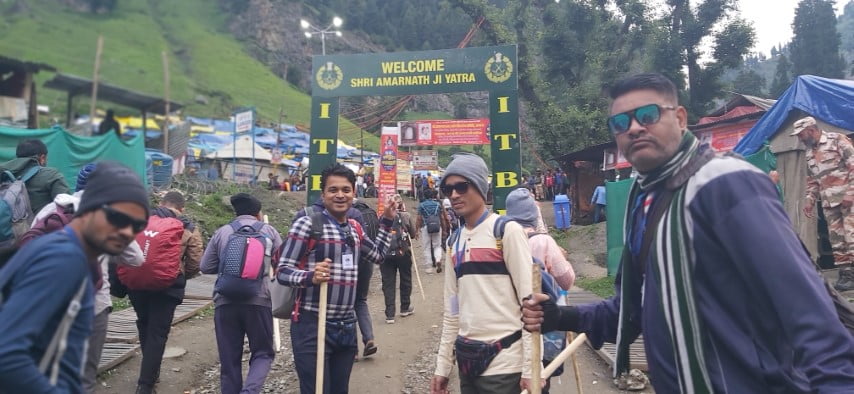
This pilgrimage starts from Chandanwari, a place of utmost importance. Before starting their journey, pilgrims often stop at the Shiva temple located here to seek blessings. The route from Chandanwadi to Pissu Top challenges the physical and mental stamina of the pilgrims because of the steep climbs and rugged landscapes.
Chandanwari to Hathi Matha
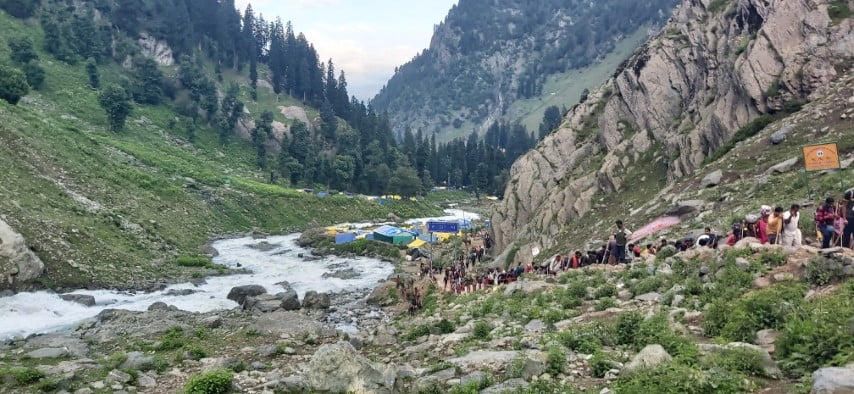
Starting from Chandanwari, the holy Amarnath Yatra begins with a journey of about 34 kilometers on foot or by mule to the revered Holy Amarnath Cave of Lord Shiva. This route holds historical significance, reflecting the route that Lord Shiva himself traveled on his way to the Amarnath cave. Embarking on this journey offers pilgrims a breathtaking immersion in the grandeur of nature and a series of memorable experiences.
Read More: Most Visit Natural Places in India
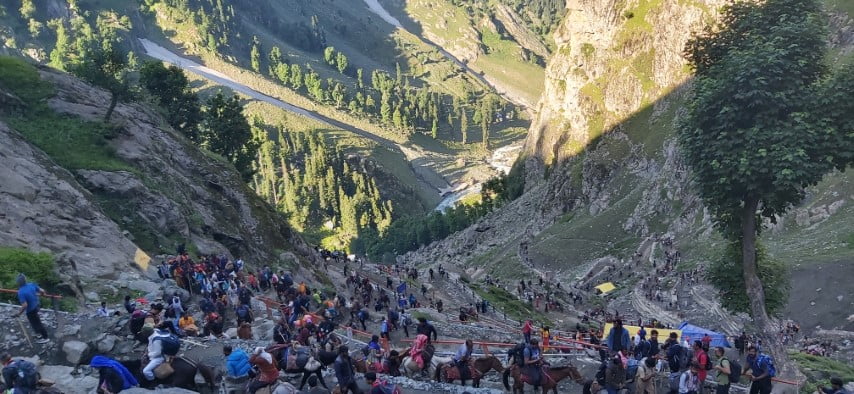
As the expedition progresses, the Lidder River becomes a faithful companion, guiding paths through the valleys and uphill climbs. The initial stage of the journey is particularly difficult, involving a steep climb known as “Hathi Matha”, which translates to “elephant’s forehead”.
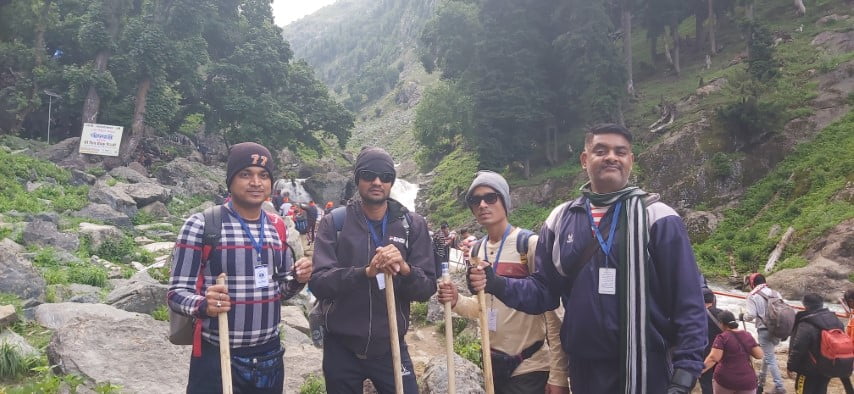
This section of the route presents a rigorous challenge, requiring every bit of strength and determination from the pilgrims. Many people going on the Amarnath Yatra take the help of mules during this journey, keeping in mind the physical exertion required due to the increase in altitude.
Read More: Best Places for Tracking In Uttrakhand
Hathi Mattha to Pissu Top

Following the rigorous ascent to Hathi Matha, the trail gradually inclines, leading pilgrims towards Pissu Top. While the sound of the Lidder River remains audible, it becomes a distant melody in the background.
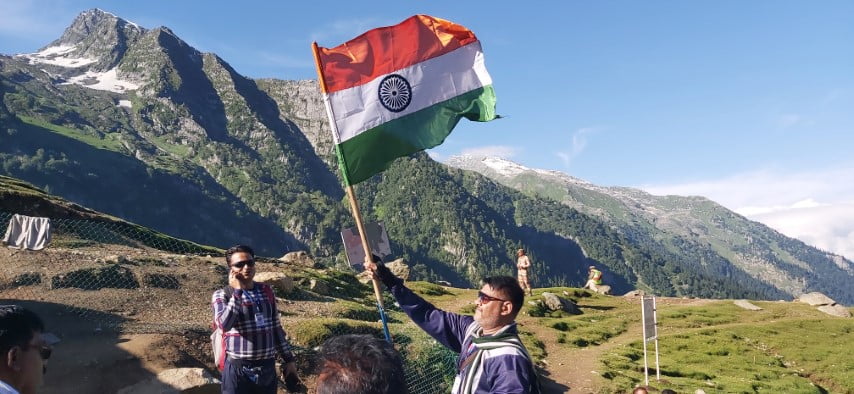
The narrative that enshrouds Pissu Top narrates that Lord Shiva chose this location to free himself of all his fleas, a symbolic act that marked the continuation of his divine expedition. The panorama that unfolds on this stretch is truly captivating. On one side, the majestic mountains stand tall, their grandeur contrasting against the vastness of the sky.
Read More: Evergreen Tourist Places of Madhya Pradesh
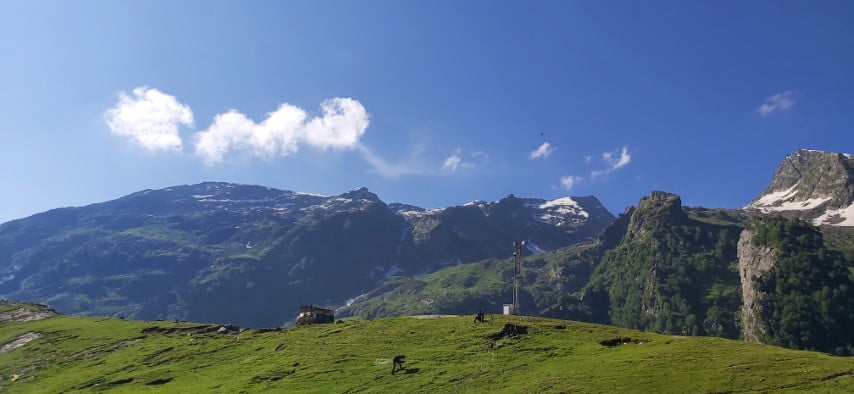
On the other side, the ever-flowing Lidder River meanders, adding a touch of tranquility to the rugged terrain. The juxtaposition of these elements creates a visual symphony that resonates with the pilgrims’ souls.
Pissu Top to Jojibal
From here the climb gradually becomes easier. A difficult climb up Pissu Valley leads to the beautiful mountain and a trail along its side.
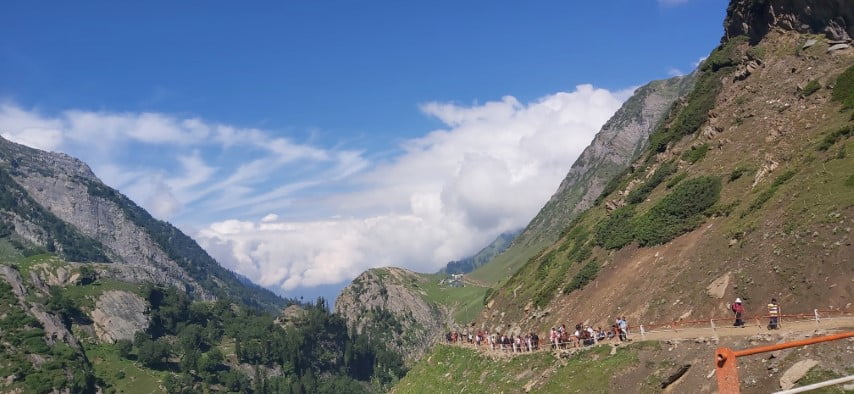
You can see pilgrims from all over the country and abroad climbing here with faith and enthusiasm with slogans of Jai Bhole, Har Har Mahadev, and Om Namah Shivay. The view and the excited people fill you with tremendous energy to continue the climb.
Jojibal to Naga Koti
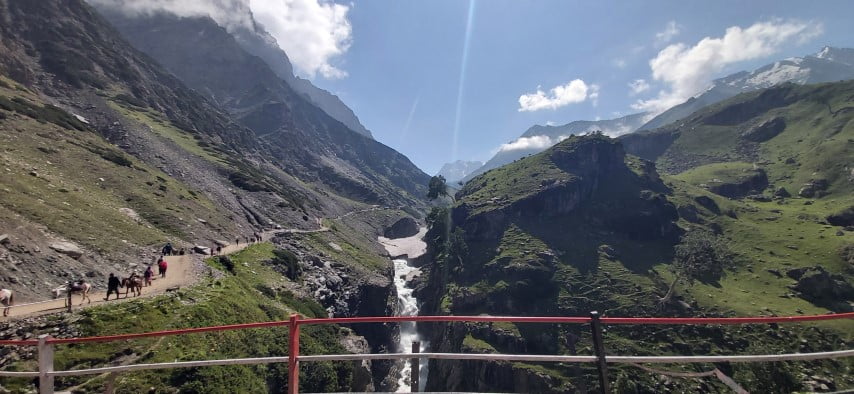
The road from Jojibal to Naga Koti is flat and of little height, Liddar River flows along the way. Many cascading waterfalls can be seen from the high mountains here.
Read More: Top Hill Stations of Uttarakhand State
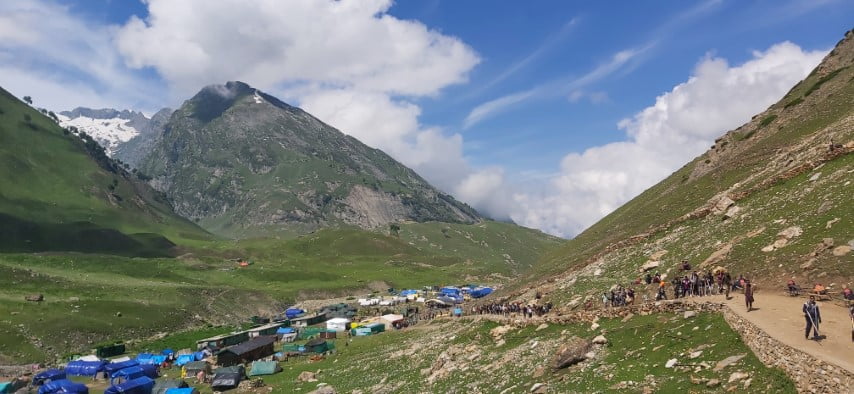
On reaching Naga Koti, the Sheshnag Lake base camp is visible, travelers reach Naga Koti from Jojibal, take some rest, and then proceed further.
Sheshnag Base Camp
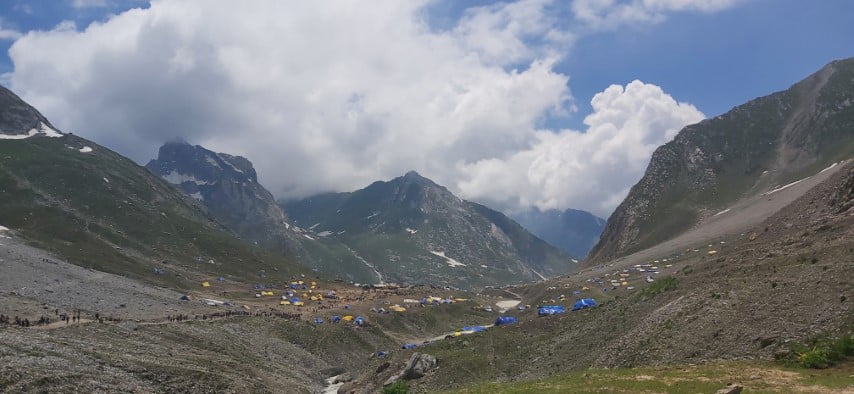
When going from Jojibal towards Sheshnag Base Camp, there are some hills, Sheshnag Lake can be seen from a distance. Beautiful and snowcapped mountains all around and Sheshnag Lake is situated on the beach, a very beautiful sight which strengthens our religious faith. The water overflow of Sheshnag Lake becomes the source of the Lidder River.
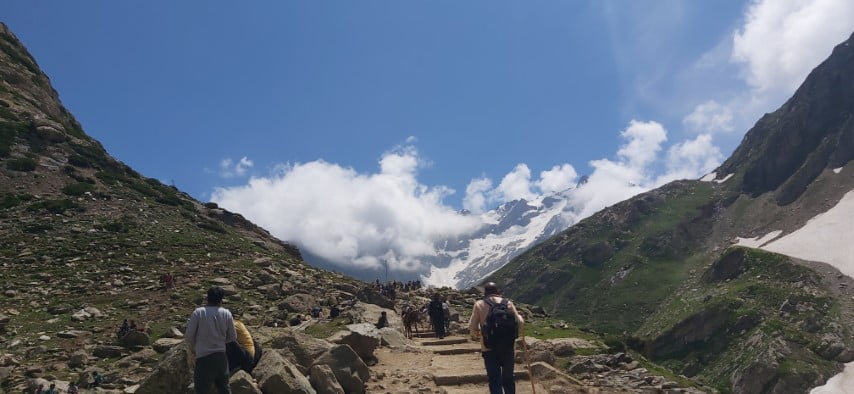
Many stories are also associated with Sheshnag. There is a story associated with Lord Shiva and during Maratha times he was situated here and released his Sheshnag in the lake. People say that Sheshnag appears in them but this is a rare sight.
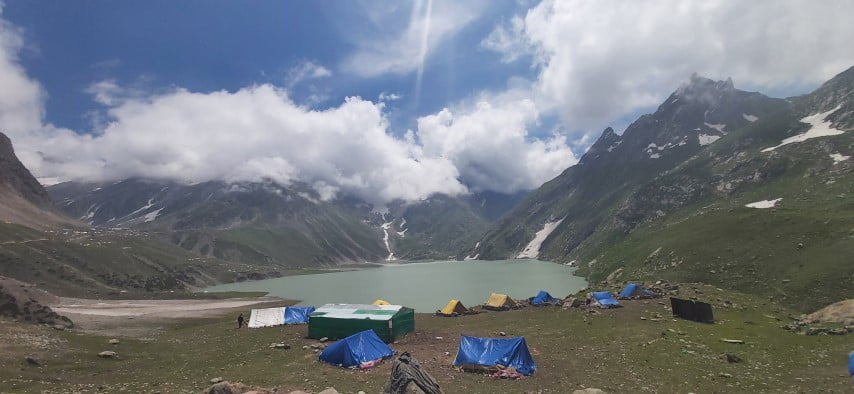
Sheshnag valley is mysterious and various different lakes, lake mountains, and mesmerizing can be found here. The other side of the lake comprises the Tri Parvat or three peaks each of which depicts Brahma, Vishnu, and Mahesh (Trimurti).
Read More: Top 10 Natural Wonders of the World
Sheshnag to MG Top:
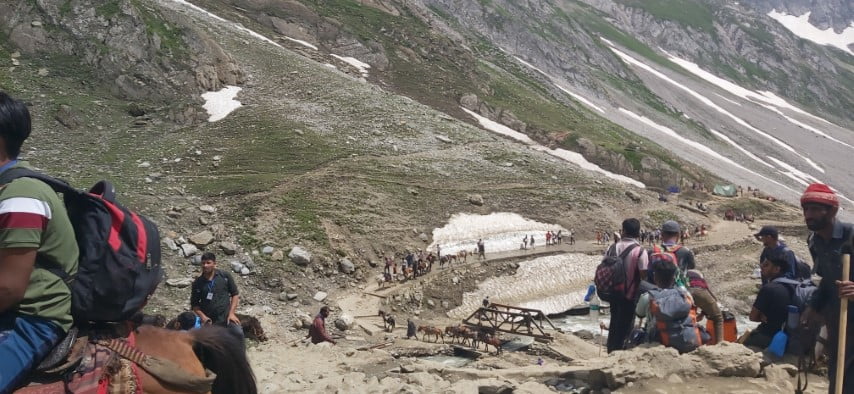
From the Sheshnag base camp onwards the ascent starts again and the ascent is done till the highest point of the trek. MG Top passes through a frozen glacier.
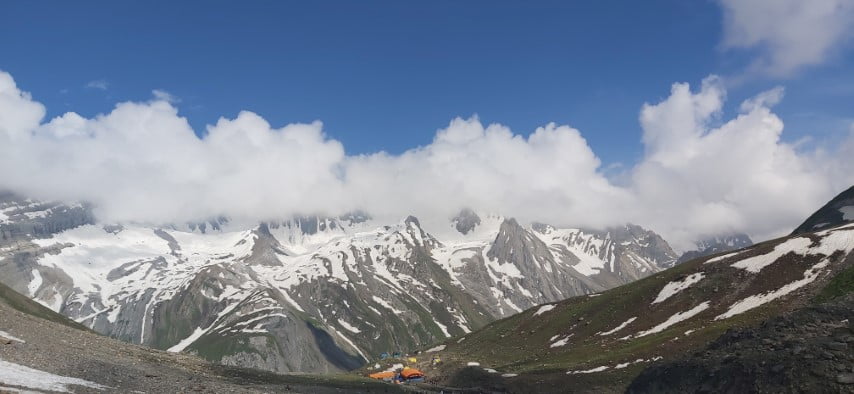
The walking speed of almost all travelers on this route slows down, the air becomes rarefied and vegetation ceases to be visible. Here one gets the feeling of a mountain pass at an altitude of 14000 feet.
MG Top to Ganesh Top
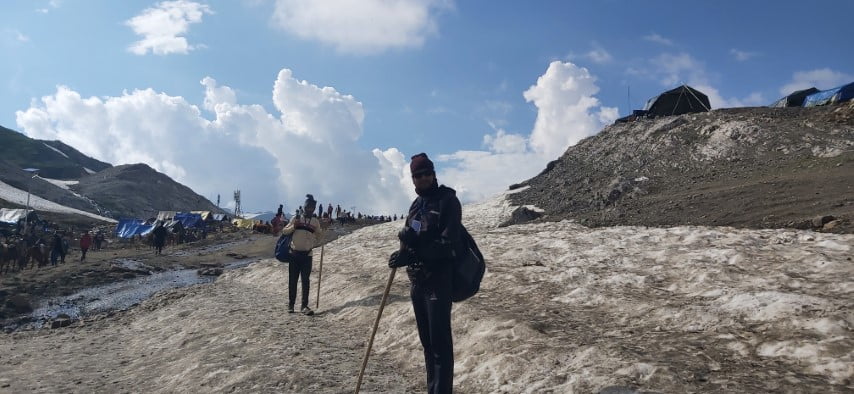
The distance from MG Top to Ganesh Top will be about 1 kilometer, but it can be considered the most difficult stage of the journey. By the time they reach here, the number of passengers decreases a lot, because many passengers go ahead sitting on mules.
Read More: Top 7 Natural Wonders Of The World
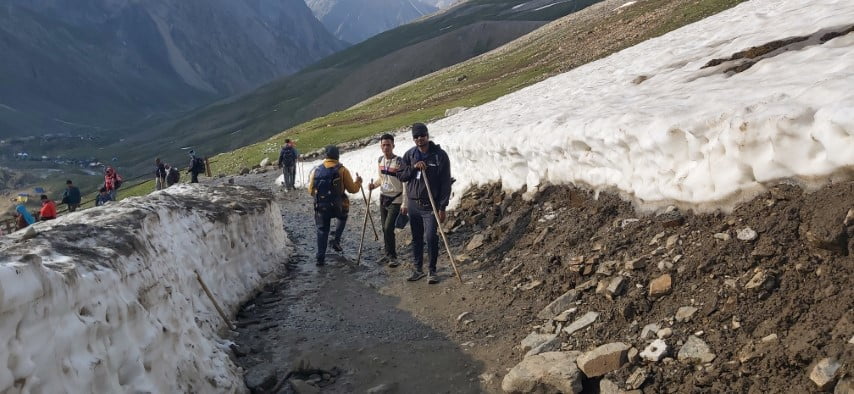
From this place only good hills and frozen lakes are visible. Ganesh Top is the best point of the journey where you have to walk at an altitude of 14500 feet. The experience at the highest point is so exhilarating that you forget the fatigue of the climb and become in tune with nature. It is said that Lord Shiva left his son Ganesha at this place and continued his journey towards the holy cave.
Ganesh Top to Posh Patri
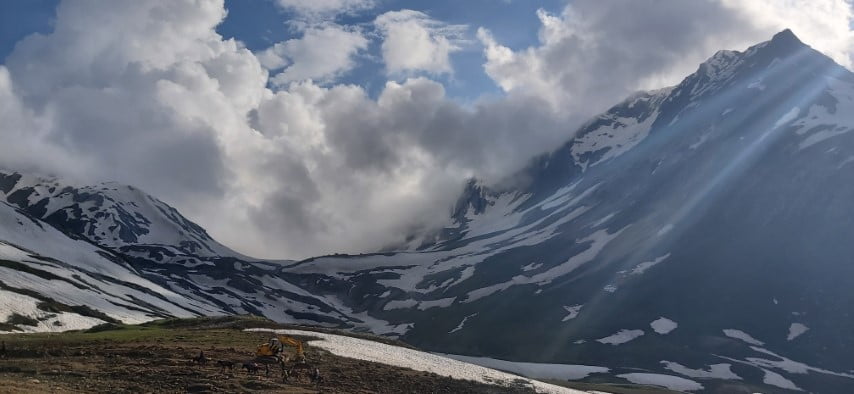
Beyond Ganesh Top, the journey of Posh Patri becomes easy because now it starts to mold a little. The most snow can be seen on this route because here you are descending from the highest height. The distance from Ganesh Top to Posh Patri is about 3 km. In posh Patri, along with a medical facility, there is also a storage facility.
Posh Patri to Panchtarni Base Camp
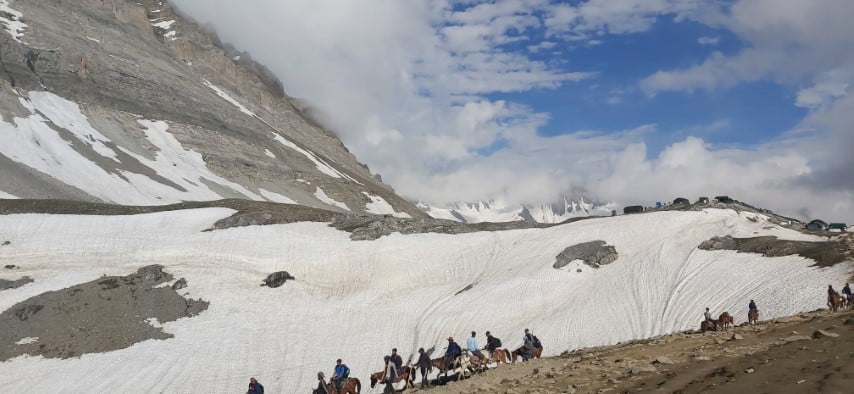
Glaciers are spread all around Posh Patri, as soon as you move ahead from here, grasslands start appearing after a few kilometers, as well as you can see local people grazing sheep here. Panchtarni Base Camp can be seen while walking on these paths.
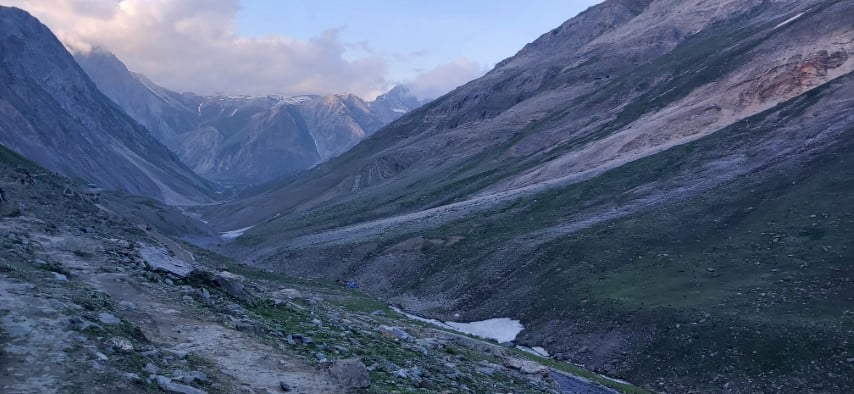
The route from Posh Patri to Panchtarni Base Camp is flat and sloping as Panchtarni Base Camp is situated at an altitude of 12000 feet.
Read More: Best Natural Places To Visit in Monsoon in India
Panchtarni Base Camp
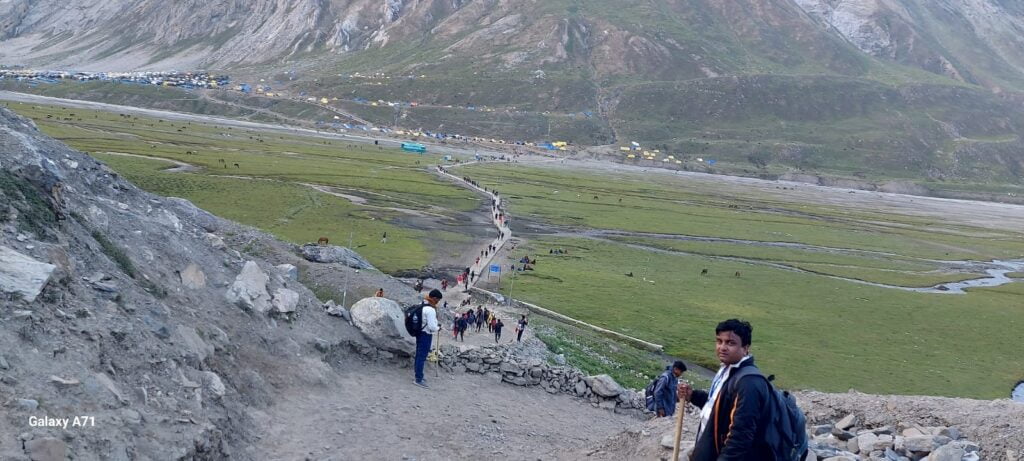
There is a base camp at Panchtarni, most of the travelers rest here. Also, there is a helipad here for the convenience of helicopters. Panchtarni is surrounded by snow mountains on all sides.
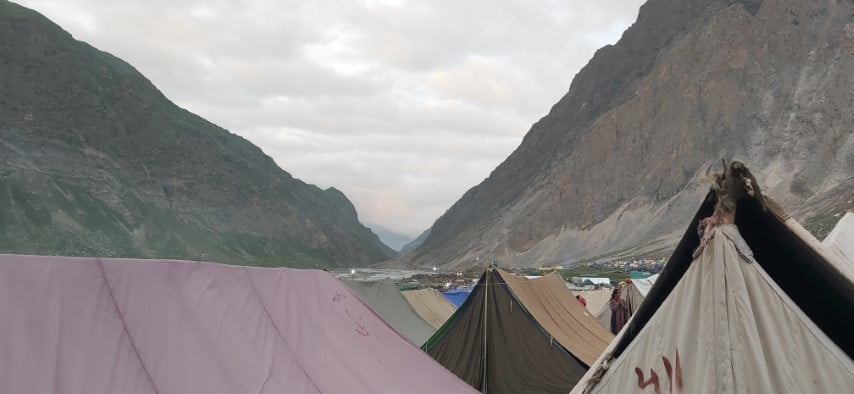
Five rivers join together at Panjtarni which apparently originated from the hair (jatas) of Lord Shiva. According to mythology, Lord Shiva sacrificed his hair (jatas) here. Apart from medical facilities, there are many stores for catering here.
Panchtarni to Sangam
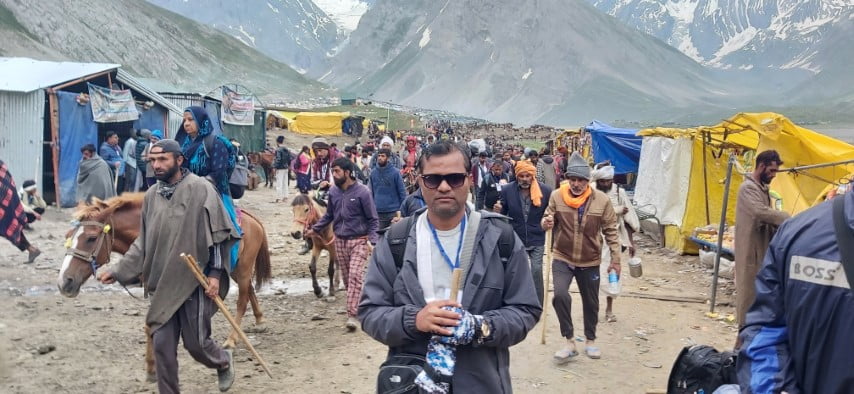
The road from Panchtarni to Sangam Marg is very difficult because of the gorge on one side and the high mountains on the other. Somewhere in this route, the roads are a bit narrow, as well as, pithu wala, palki wala, and mule wala pass through the same route due to which the pedestrian has to be a little cautious.
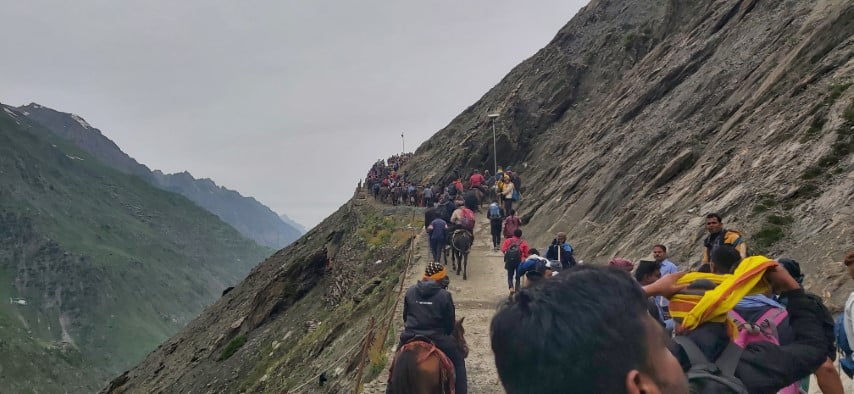
Here the helicopter can be seen flying over the valley of the Panchtarni river, which flies much lower than the pedestrians. On this route, small green grass can be seen on the mountains. Two rivers Amravati and Panchtarni meet at Sangam.
Read More: Top Tourist Places To Visit In Jammu And Kashmir
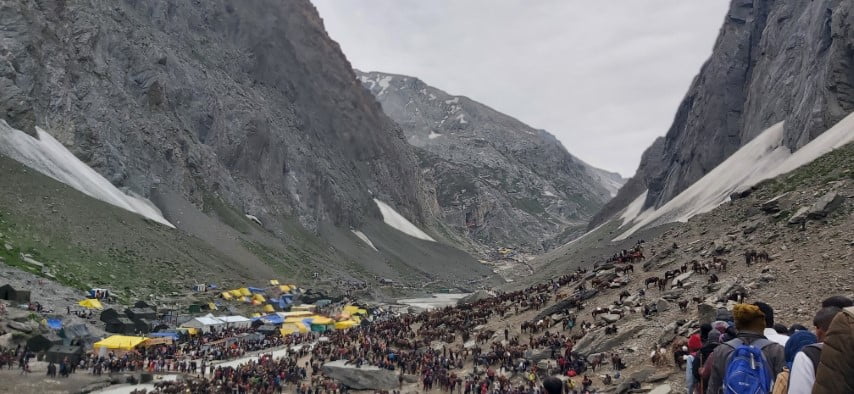
At the same time, on reaching the Sangam Marg, the sheets of ice become visible again. Here the route coming from Panchtarni and Baltal meet. Many devotees take a dip in the Amaravati river before entering the cave.
Sangam to The Holy Cave:

Even before reaching the Sangam Marg, the Amarnath cave becomes visible from a distance. The traveler forgets all his tiredness after reaching here just by seeing the cave.
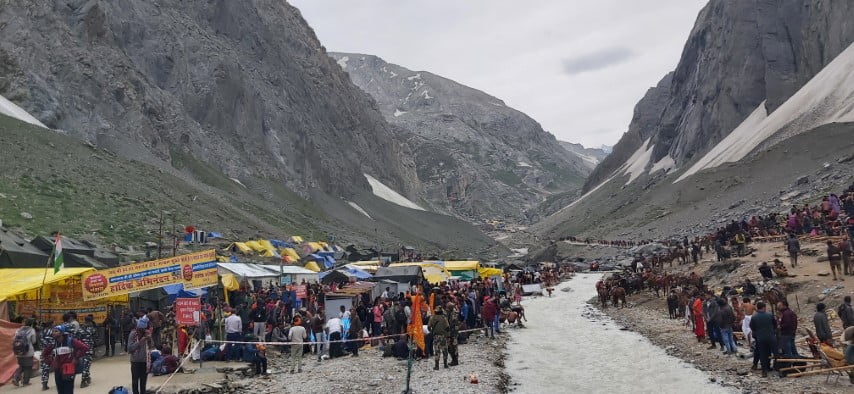
The number of passengers increases on the Sangam route because passengers coming from Baltal and Pahalgam meet here. Here some pilgrims take a bath in the Amravati river and proceed toward the cave.
Read More: The 11 Most Sacred Rivers of India
Holy Amarnath Cave:
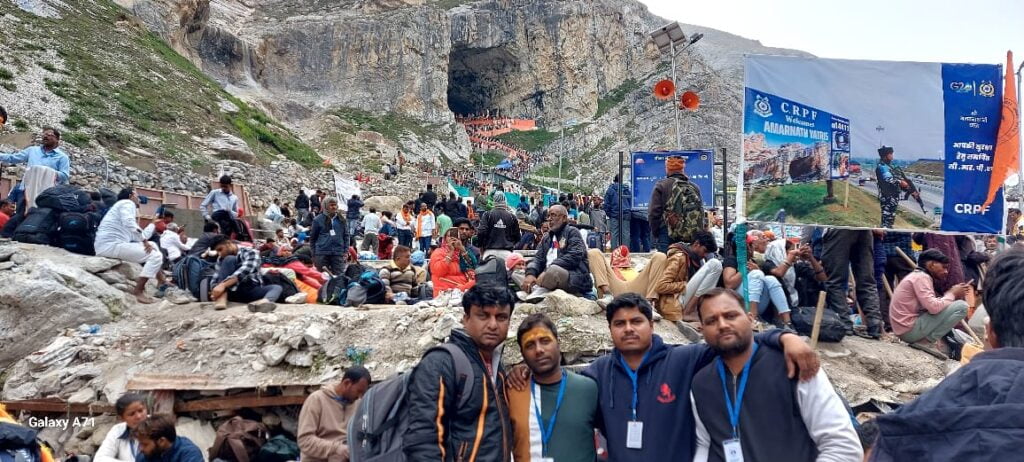
Before going for the darshan of Baba Barfani in the holy cave, travelers have to keep their luggage along with all the electronic gadgets in the locker room built here. Stairs are used to reach the cave, where one has to walk barefoot.
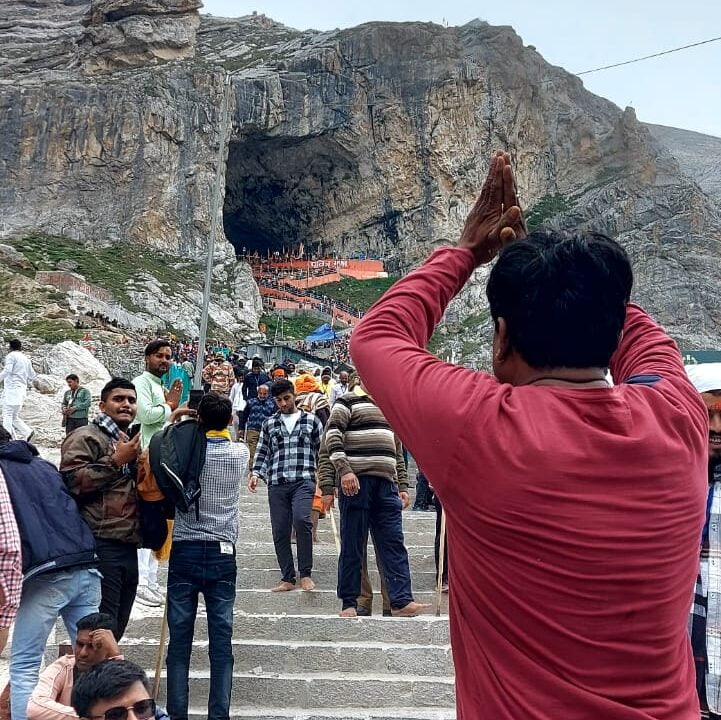
Ice-cold water flows beneath the feet, but the joy of visiting Baba Barfani is not the experience of coolness. When Baba stands inside the cave to have a darshan of Barfani, one feels a wonderful peace as well as pride because this is the last stop of a difficult journey.
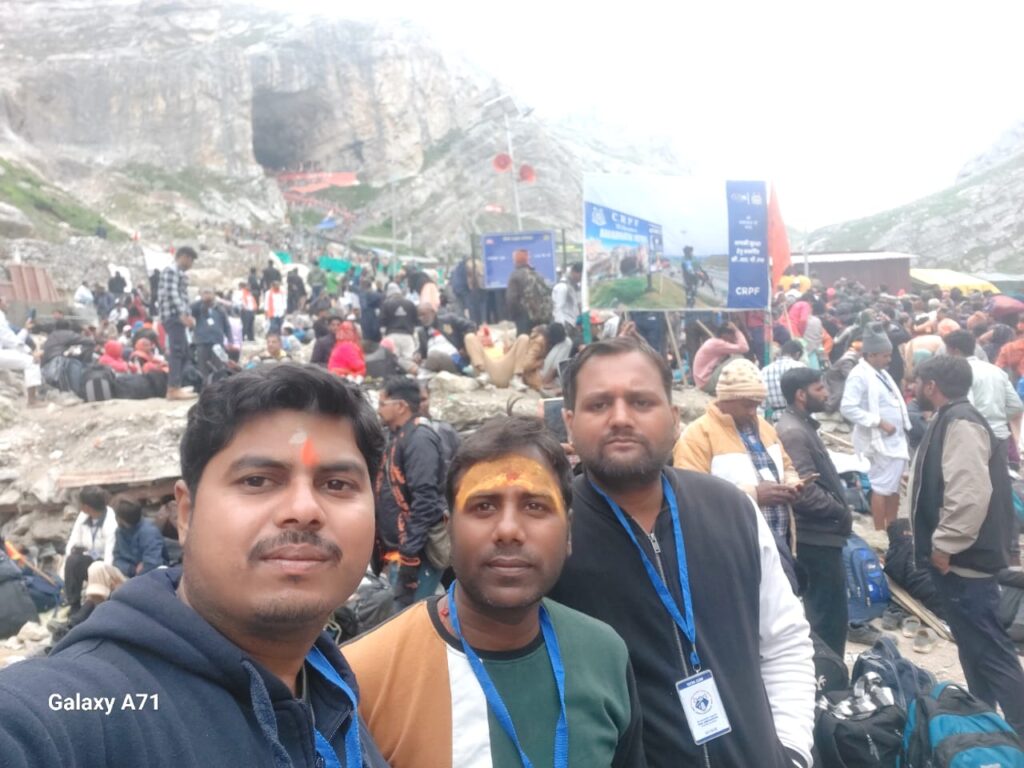
Here cool water drops drip from the ceiling of the cave, along with this the immortal pigeons that live here can also be seen. There are also two other small Shivlings here, one of Maa Parvati and the other of Shri Ganesh.
Return from Amarnath Cave to Baltal Base Camp
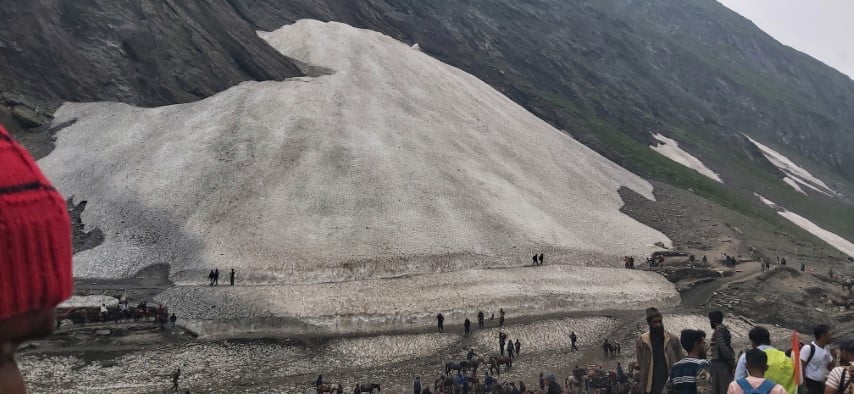
It is difficult to express in words the feeling of joy that one gets after having the darshan of Baba Barfani. One thing I regret about this place is that I did not come here earlier, and the desire to come next year is already strong.
Read More: Most Beautiful Lakes Of The Himalayan Mountain Range
Holy Amarnath Cave to Kalimata Temple
After visiting the holy cave, when we proceed back via Baltal, the first stop is Kalimata Temple. This place is the best point of this route, whose height is around 12000 feet, the way to reach here is very remote.
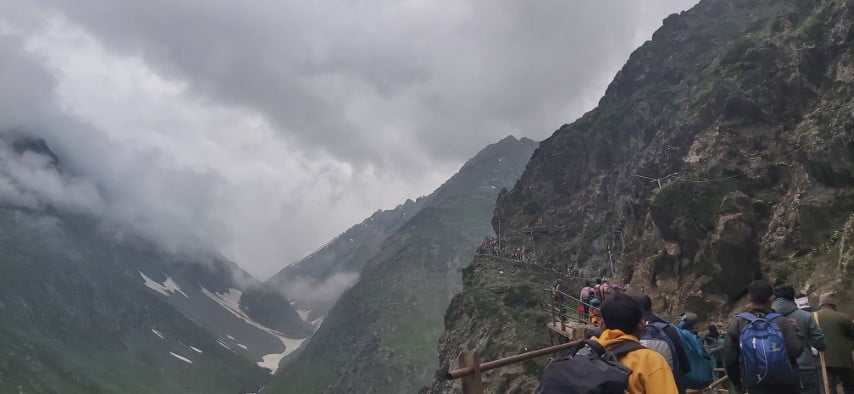
In this way, there is a ditch on one side and a high hill on the other side. Here small grass can be seen on both sides of the road, in which many colorful flowers are blooming.
KaliMata to Barari Mandir
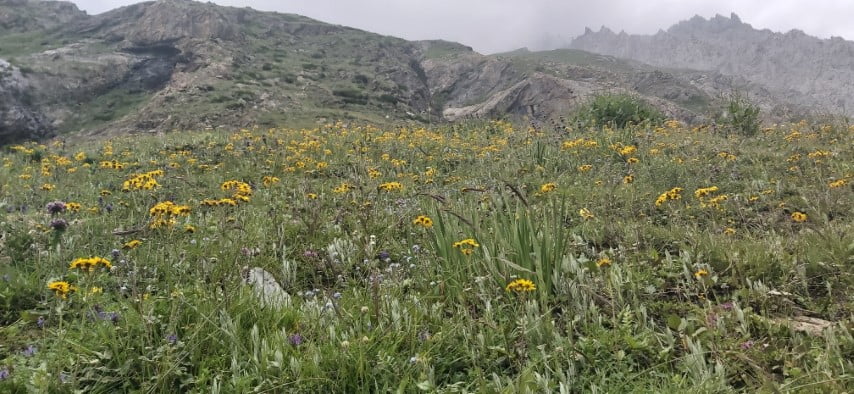
Kali Mata Temple is the highest point on the way back which is around 12000 feet high. The road to Barari from here is flat and slightly sloping. On the way, there are high mountains on one side and a deep gorge on the other.
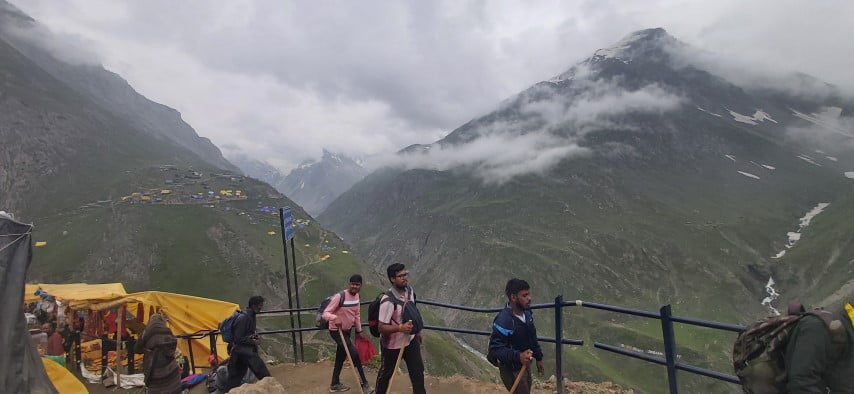
Small grassy bushes are visible on both sides of the path, and colorful flowers can be seen blooming in them. It is a different experience to see the clouds flying down.
Read More: 10 Must-Visit Places To Visit In India In July
Barari to Domail
The road between Domail and Barari is flat but narrow. There is always a risk of landslides while walking on the path, hence travelers are advised to walk continuously.
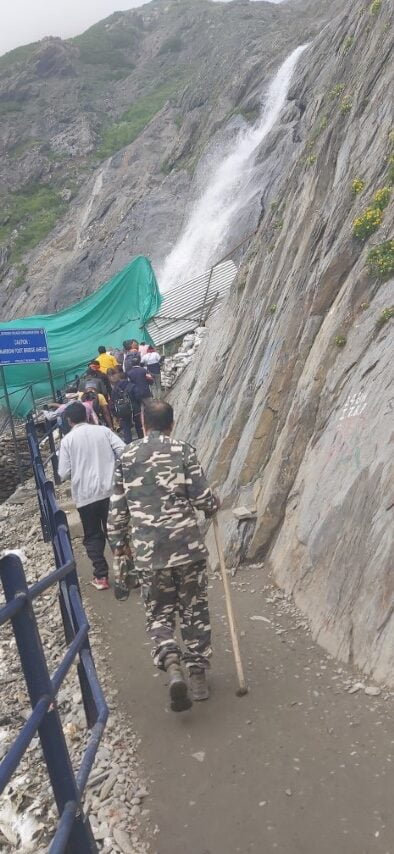
While reaching Domail, the height of the road starts decreasing and at the same time, green forests are visible in the distance. There are many huge stores in Domail. Domail is the last stop on the way from Amarnath Cave to Baltal.
Domail to Baltal
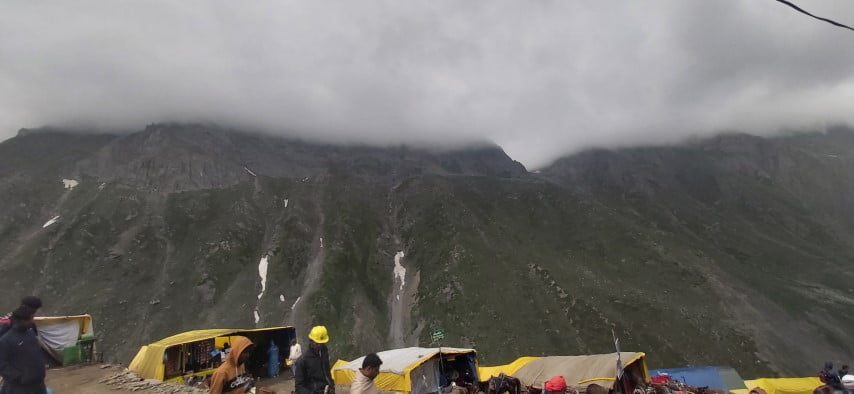
The road from Domail to Baltal is completely sloping, in which not a single hill has to be climbed. The road is a bit wide on this route, but there is a possibility of a landslide. Before reaching Baltal, forest and green valleys start appearing. Passenger cards are withdrawn from the passengers as soon as they reach Baltal.
Read More: Top 10 Rainiest Regions in India
Baltal Yatra Completion
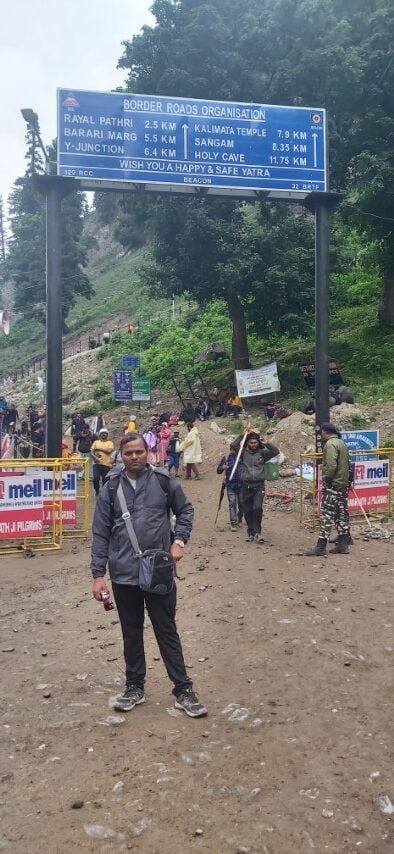
Amarnath Yatra is completed as soon as you reach Baltal, you will have a different feeling as soon as you reach here as if a mission has been completed. Baltal has markets on both sides of the road, where a variety of shops can be found.
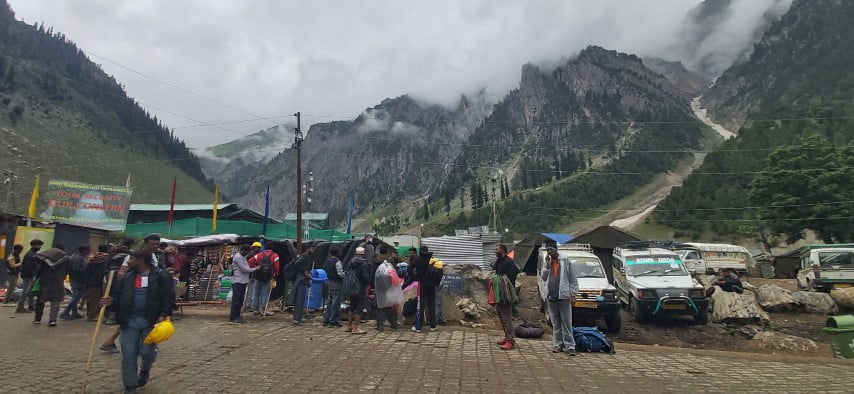
It is the evening before reaching here from Baba Barfani Cave, the yatris have to stay at Baltal Base Camp for the night.
Read More: Top Hill Stations of Uttarakhand State
Facilities and arrangements for pilgrims during Amarnath Yatra
One has to go to Bhagwati Bhawan with a passenger card from Jammu Railway Station, after that all the responsibilities are handled by Shineboard. The journey from Jammu to Pahalgam is done under the protection of army personnel.

Free shops are constantly running everywhere on the way, and there are also good arrangements for accommodation and bathrooms. In case of any inconvenience, army personnel can be contacted.
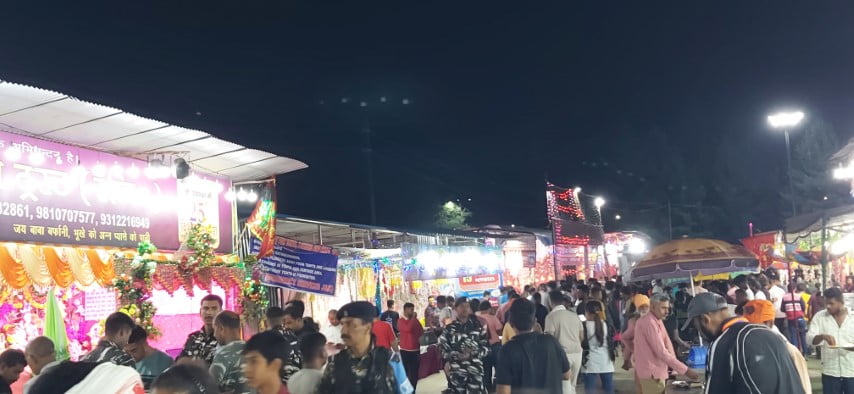
Medical and oxygen facilities are available everywhere to avoid any inconvenience to the passengers. Everyone should experience this religiously and naturally rich journey once in a lifetime.
